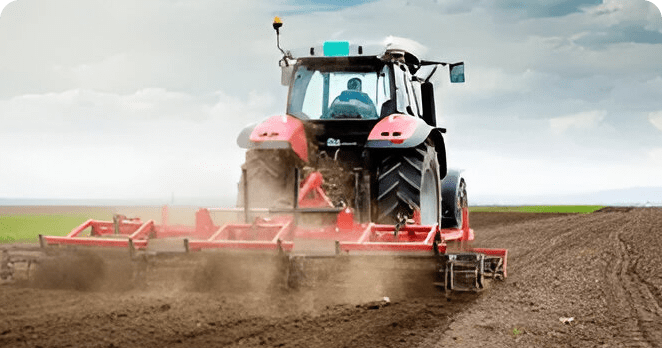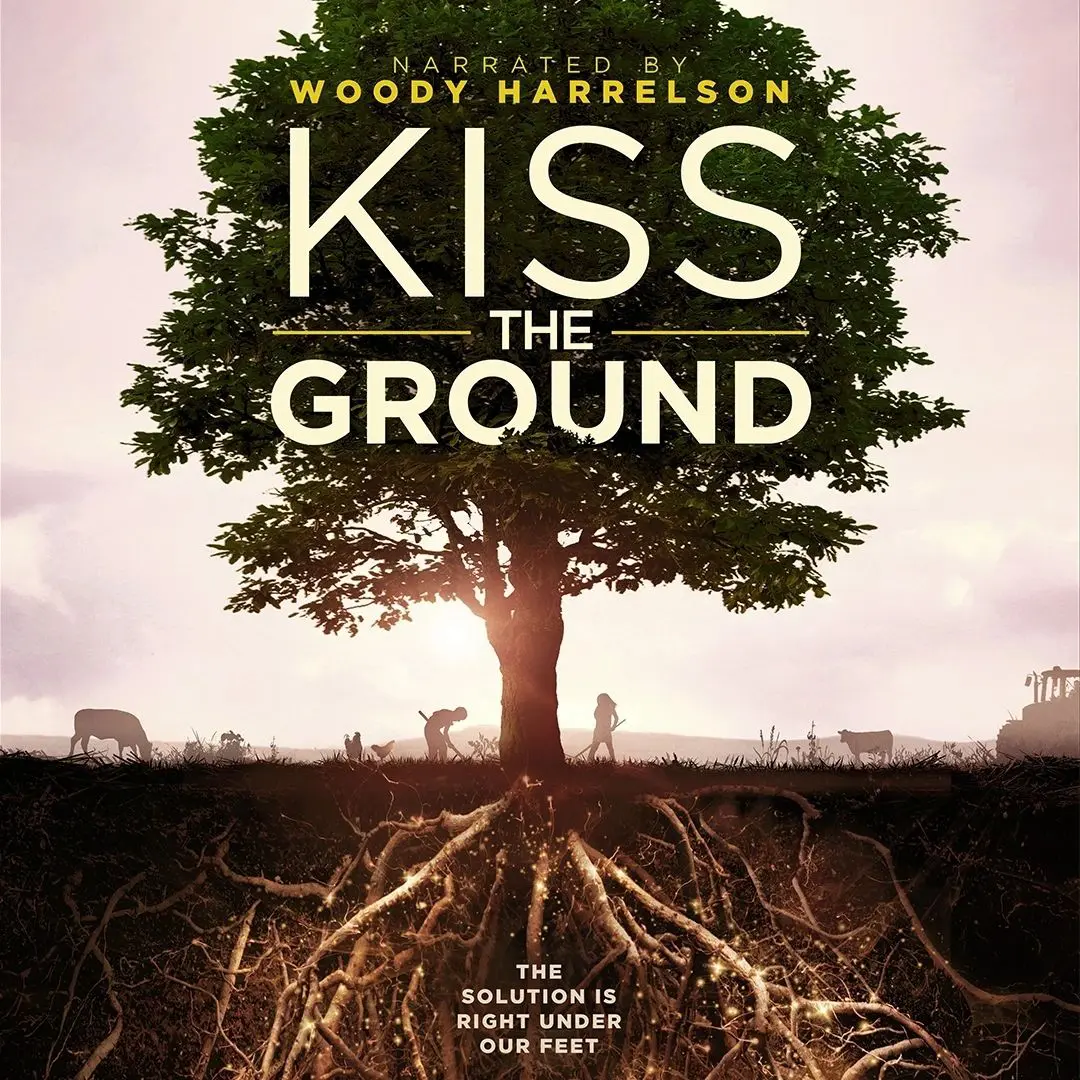Waste
Waste disposal has long been a problem for the developing world. Food waste alone in Australia has been estimated at $20 Billion Annually in 2020 according to 'Fighting food waste with a circular economy' by KPMG. Costs aside - the gasses released from rotting food around the globe contribute 8% of global greenhouse gas emissions annually.
The Australian government developed the National Waste Action Plan to deal with the ever-growing problem of waste in Australia. According to Australia's National Waste Report in 2021', Australians produced 76 million tons of waste, which is a staggering 2.76 tons per person! This is actually a 3% increase on the prior year.
Waste once sent to landfill slowly decomposes through anaerobic decomposition. The by-product of anaerobic decomposition is Carbon Dioxide, Methane and Nitrous Oxide - all of which are greenhouse gasses.


Traditional Agricultural Practices
Tillage is the practice of 'breaking open' the ground for seedbed preparation, aeration of the soil, weed suppression, levelling out the ground and turning back old crop stubble back into the ground. Tillage can be shallow or deep.
Synthetic pesticides were born out of the same US department that created chemical weapons for WW1. Large chemical companies that had significant infrastructure from the war capitalised on this and began the transition to pesticides and insecticides.
Synthetic Fertilisers - During WW1, Chemical companies in the US could no longer rely on German potash (potassium nitrate), which had been supplying American farmers for decades. The US discovered alternate sources; however, these were to be used in the manufacture of munitions, explosives, and chemical weapons - such as Mustard Gas. Again, at the conclusion of WW1, these companies re-pivoted into the modern agricultural space.
Agriculture must transition from the extractive phase to the regenerative phase.
How does soil tillage contribute to greenhouse gas emissions?
Below is a time-lapse from NASA showing the CO2 release throughout the seasons. Watch how the CO2 levels increase rapidly as the Northern Hemisphere prepares and 'tills' its soils in preparation for planting.
Our Solution
Improve Soil Health
Healthy soil is the cornerstone of a sustainable and productive agricultural system. Enhancing soil health involves improving its physical, chemical, and biological properties, which leads to higher crop yields, greater resilience against pests and diseases, and a more sustainable environment.
At the core of our mission is the belief that by nurturing our soil today, we can cultivate a thriving, sustainable future. Healthy soil underpins robust ecosystems, resilient agriculture, and a balanced climate. Through innovative soil solutions, we ensure that the earth remains fertile and capable of supporting diverse life forms for generations to come.
Healthy soil is vital for maintaining biodiversity. Our solutions aim to improve soil structure, fertility, and microbiome diversity, which in turn supports a wide range of plant and animal life. By promoting soil health, we create resilient ecosystems that can withstand climate change and other environmental stresses, ensuring a vibrant, biodiverse world for future generations.
Our range of organic soil amendments, including our premium product - Humus compost, are the best solution for improving soil health.


Combat Waste
Addressing the challenge of organic waste is crucial for building a sustainable and resilient future. Organic waste, including food scraps, yard trimmings, and other biodegradable materials, constitutes a significant portion of the waste stream. By combatting organic waste through effective management strategies, we can reduce environmental pollution, conserve resources, and promote healthier ecosystems. Here's how we can tackle organic waste and the benefits it brings to our environment and communities.
Reducing Greenhouse Gas Emissions
One of the most significant environmental impacts of organic waste is the production of methane, a potent greenhouse gas when it decomposes anaerobically in landfills. By diverting organic waste from landfills to composting facilities, we can significantly reduce methane emissions. Composting facilitates aerobic decomposition, which not only minimises greenhouse gas emissions but also transforms waste into valuable compost, reducing our overall carbon footprint.
Conserving Natural Resources
Organic waste diversion helps conserve valuable natural resources. By recycling nutrients and organic matter through composting, we reduce the demand for synthetic fertilisers and preserve finite resources. Additionally, diverting organic waste from landfills prolongs the lifespan of existing landfill sites and reduces the necessity for new ones, conserving land and minimising the environmental impact of waste disposal.
Promoting a Circular Economy
Combatting organic waste is integral to fostering a circular economy, where waste is viewed as a resource to be reused and recycled. By converting organic waste into compost and other valuable products, we create a closed-loop system that maximises resource efficiency and reduces waste. This approach not only benefits the environment but also drives economic growth by creating green jobs and encouraging innovation in waste management technologies.
Strengthening Community Engagement and Resilience
Communities that actively combat organic waste are better positioned to achieve sustainability goals and enhance their resilience. Local composting programs engage residents in sustainable practices, raising awareness about waste reduction and environmental stewardship. Producing local compost supports urban agriculture, community gardens, and green spaces, contributing to food security and improving the quality of life in urban areas.
Apply Regenerative principles
In the face of environmental challenges and the need for sustainable practices, applying regenerative principles in agriculture and land management offers a transformative path forward. Regenerative agriculture focuses on restoring and enhancing the health of our ecosystems, promoting biodiversity, and ensuring long-term agricultural productivity. By integrating these principles, we can create a resilient and thriving environment that benefits both people and the planet.

Building Soil Health
At the heart of regenerative principles is the commitment to building and maintaining healthy soil. Practices such as cover cropping, crop rotation, and reduced tillage enhance soil structure, increase organic matter, and promote a vibrant soil microbiome. Healthy soil not only supports robust plant growth but also improves water retention, reduces erosion, and sequesters carbon, mitigating the impacts of climate change.
Enhancing Biodiversity
Biodiversity is a cornerstone of resilient ecosystems. Regenerative practices encourage the diversification of plant species through polycultures, agroforestry, and integrating livestock. These methods create habitats for a variety of organisms, from beneficial insects to soil microbes, fostering a balanced and self-sustaining environment. Enhanced biodiversity leads to natural pest control, improved pollination, and greater ecosystem stability.
Fostering Resilient Ecosystems
Regenerative principles emphasise the importance of creating ecosystems that can withstand environmental stresses. By promoting practices such as rotational grazing, holistic planned grazing, and perennial planting, we can enhance the resilience of agricultural systems. These practices improve the land's ability to recover from disturbances, such as droughts or heavy rains, ensuring consistent productivity and ecological balance.
Promoting Water Conservation
Water is a vital resource, and regenerative agriculture focuses on efficient water use and conservation. Techniques like rainwater harvesting, contour farming, and maintaining soil cover reduce water runoff and enhance infiltration. By improving soil structure and organic matter content, regenerative practices increase the soil's water-holding capacity, reducing the need for irrigation and preserving precious water resources.
Supporting Local Communities
Applying regenerative principles goes beyond environmental benefits; it also strengthens local communities. By fostering sustainable and resilient agricultural practices, regenerative agriculture supports local economies, creates job opportunities, and promotes food security. Communities engaged in regenerative practices often experience improved health and well-being, as they have access to fresh, nutrient-rich food and a healthier environment.
Integrating Innovation and Tradition
Regenerative agriculture seamlessly blends innovative techniques with traditional knowledge. Farmers and land managers apply modern scientific understanding, to enhance age-old practices, ensuring they are sustainable and effective. This integration of knowledge leads to more efficient use of resources, higher productivity, and a deeper connection to the land.



